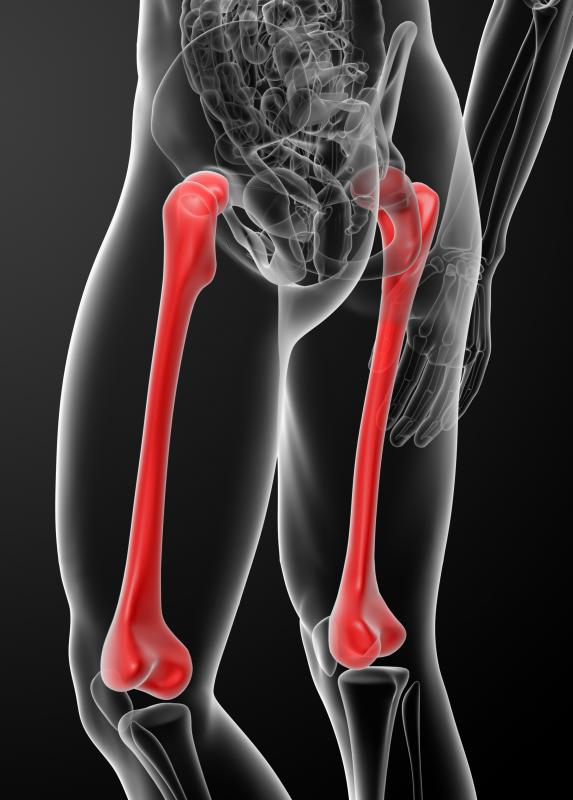At WiseGEEK, we're committed to delivering accurate, trustworthy information. Our expert-authored content is rigorously fact-checked and sourced from credible authorities. Discover how we uphold the highest standards in providing you with reliable knowledge.
What is Femoral Anteversion?
Femoral anteversion is a condition in which the femur bones of the thighs twist inwards more than usual, causing an individual’s knees and feet to turn inwards. People with this type of thigh bone anteversion have an unusual gait, as they are unable to walk with their legs straight and feet close together. This walking style is often referred to as “pigeon-toed” or “in-toeing.”
Femoral anteversion in children is usually congenital, meaning that the child is born with this condition. Up to ten percent of children are born with femur anteversion, and girls are twice as likely as boys to be affected. This condition does not increase the child’s risk of developing conditions such as arthritis, or any other muscle or bone diseases.

The exact cause of anteversion of the femur is unknown. It is thought to relate to the position of the child within the uterus, as certain positions may cause the hip muscles and femur bones to become abnormally situated. The condition may also be partially genetically inherited, as there is a tendency for the pigeon-toed gait and appearance to run in families.

Femoral anteversion can be diagnosed by a family doctor during a physical examination. In some cases, tests such as an x-ray, CT scan, or MRI scan may be used to aid in diagnosis. These tests are used to evaluate the degree of anteversion the child has to determine what kind of treatment may be necessary.
At birth, femur bones are normally anteverted approximately 40 degrees. By adolescence, this has reduced to between 10 and 15 degrees. In a child with femoral anteversion, the femurs are anteverted by more than 40 degrees, and in some cases, more than 50. When the anteversion is between 40 and 50 degrees, treatment is often not required, because the anteversion will have reduced significantly by the time the child enters adolescence.

If the anteversion is more than 50 degrees, and the child is eight years or older, some type of surgical treatment may be carried out. This is because at this age and with this degree of anteversion, it is unlikely that the condition will have corrected itself by the time he or she reaches adolescence. The surgical femoral anteversion treatment which is commonly used is called a femoral derotation osteotomy.

During a femoral derotation osteotomy, an orthopedic surgeon will cut the femur, rotate the ball of the femur in the hip socket until it is situated normally, and then reattach the bone. Metal plates may be attached to provide the bones with some support and stability while healing. This procedure is carried out under a general anesthetic, and will normally require a few days of hospitalization afterwards. Healing may take between three and six months, and most children will require pain medication, as well as physical therapy, to aid in recovery.
AS FEATURED ON:
AS FEATURED ON:

















Discuss this Article
Post your comments